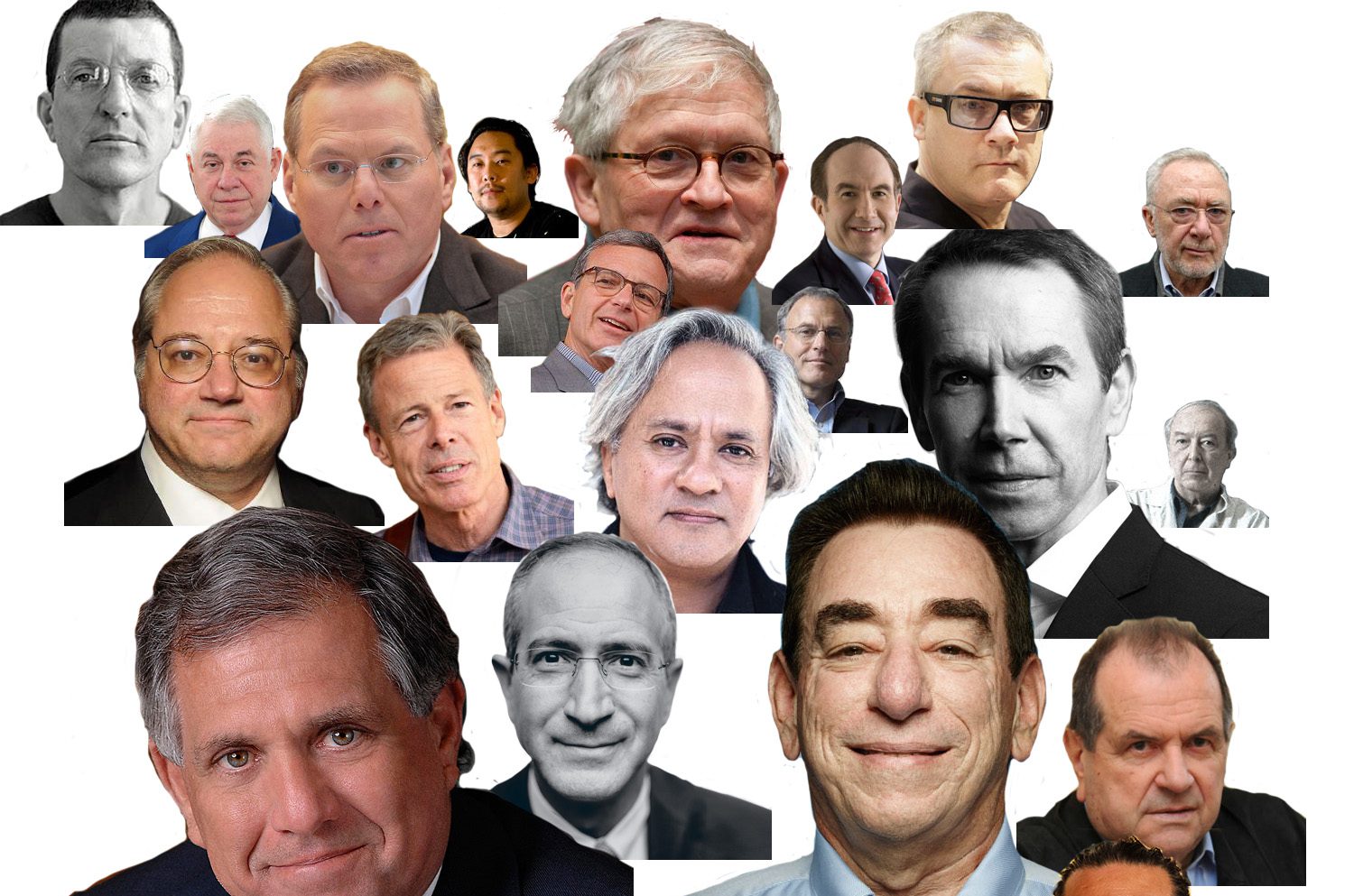It is not enough to suppress the adversary if you do not erase her memory and her ability to organize an alternative project… In the face of this strategy, we can understand that the three primary functions of the testimonies are to accuse the executioners, to record the sufferings and the epics, to inspire the other combatants in the middle of retreat. A fourth function…is to carry out a rational analysis of the problems and the reversals that are being suffered… Above all, to accuse.
Ariel Dorfman, “Political Code and Literary Code”
It’s a familiar experience to many of us in the arts. We receive a notification from Linkedln, informing us that someone in our network that has become a CEO. We are asked to click. Click Click. “Owner, Founder, CEO of XYZ Artistic Corporation.” Another reminder of how deep, how layered our loyalty to neoliberal capitalism has become.
Is this supposed to be cute, pathetic or cruel?
BFAMFAPHD and others already made it clear that MFAs are fundamentally objectionable and questionable degrees—we’re here to build on this point. Yes, they are worthless, and we wish to investigate, and subvert, the desire to attain such artifacts.
We argue that the MFA, similar to the MBA, is a way of legitimizing capitalistic production, and grant the right to become management and collect its fees. We say that the function of both the MFA and MBA is to emphasize, and grant to a selected few, the right to profit from immaterial labor. It’s in line with the values the global north’s hierarchy proliferates: to value immaterial labor, and to value only the managing of material labor. It is: admiration for what your body does not have to touch, admiration for your ability to control the body of the other.
This point of contention is usually not commented on as a source of aesthetic shame, but of entrepreneurial and creative success. They tell us proudly about the ideas of the artists, the ideas of the CEOs. They tell us proudly how the ideas were generated, the processes of thinking about them. These are our most innovative designs, they tell us in magazines, commercials, on photographs framed by skies. We conceptualize, we conceptualize, we conceptualize. As global north consumers, we are taught not to ask about the labor, the laborers, the subcontractors (unless the subcontracted are the object of the artist’s gimmick). In the MBA/MFA programs, we are indoctrinated to become, and to elevate, the position of managers.
The rise of the MFA mirrors the rise of the MBA. They say we’re crazy for seeing coincidence as connections. So we read and read, dig and dig. Even though as Karen Finley (via Jane Blocker) reminds us, “You can read your fucking books. But nothing’s changed. Nothing has changed.”
This is what the books, the internet archive and their authors have taught us so far:
—Creative Writing courses emerged in 1897 in Iowa, graduate level writing was taught at Harvard from 1906. Fine Arts courses in Chicago and New York began in the late 1800s, and established graduate programs in the early 1920s.
—Harvard Graduate School of Business Administration is established in 1908
—MIT establishes its own graduate business program 1925
—In 1936, the Iowa Workshop is formed, SAIC is accredited in 1936.
—Title II of the Servicemen’s Readjustment Act of 1944: The G.I Bill, provided the financial infrastructure for graduate programs in both writing and the fine arts to fully form.
—After the late 40s, MBAs and MFAs proliferate throughout universities. US programs are exported to non-US locations, partnership programs are established
—In 2015, MBA programs cost around $100,000-$120,00 and continue to grow
—In 2015 there are MFA programs in nearly every institution (tuitions $30,000-$100,000 easy) they will not stop growing
—The MBA is a Terminal Degree
—The MFA is a Terminal Degree (There are no jobs for artists—the University, the public education system makes this clear. Art is not a profession, but we continue to take on terminal degrees anyway.)
The timelines adhere for a reason. Not only do their dates match, they share ideologies:
What MBA programs teach you:
–make money: your salary bracket is a reflection of your productivity, and in capitalism this is your only worth. as you advance in management, you will also be expected to make money for others (investors), but through the magic of stock options, this is another way of making money for yourself. just keep making money. your increasing wealth is the barometer of social value. it doesn’t matter how you make money, just make money. this is valuable.
–gold star on your resume: this is your entry ticket. the price is steep, but the rewards immense. we’ll ignore the somewhat questionable job placement upon graduation statistics. for those who get the job, the number of zeros render those without invisible.
–networking: this is where you put that gold star to work. these are the parties where your friends give you jobs. best to have as many friends as possible. 1,500 close relationships seems like a good start.
–marketability: the height of your valuation is recruitment. the hiring manager of a Fortune 500 company sees that you are ready to make money. make money for yourself and for others. do not ask difficult questions. smile, say cheers, and make money.
–professionalism: some window dressing is necessary. make sure your resume is formatted correctly and contains some colorful detail like your love of hiking or that one time you volunteered for an organization that offered “financial education” to poor people. Make sure you take a course in “diversity training,” to avoid lawsuits and PR management for when they inevitably arise.
What MFA programs teach you:
–gold star on your resume: your credentials matter. your pedigree matters. you have a badge and a gun, and can use them to silence the uninitiated. better not to use them in solidarity, this upsets the principle of market scarcity.
–networking: access to curators, gallerists, collectors. you need to recognize the right people at parties. they need to be comfortable around you. no need to upset them with talk of revolution. talk about how you liked every show you’ve been to in the last month, regardless of content. express excitement and wonder at all production. get really interested in modernism, those calm, clean lines. never mention the blood and sweat of the marginalized that those lines are intended to obscure.
–marketability: gallery recruitment. the extension of your comfort into the market. be provocative, but leave the status-quo intact. be grateful for “opportunities” to perform uncompensated labor. be appreciative of the gallery owner’s “investment” in you. never inquire too heavily into the backgrounds of collectors. everyone has corpses in their closet. everyone has questionable investments in oil-rich countries. everyone does a little defense contracting on the side.
–professionalism: fine tune your artist statement to cogently craft your brand. employ the rhetoric of critical theory but ignore its political implications. ‘apolitical’ is the most consumable position. the academics will like it if you talk about failure because then we don’t have to talk about justice. curators like a sense of playfulness, detached inquisitiveness, because then we don’t have to talk about ethics. gallerists will like it if you talk about aesthetics so that we don’t have to talk about politics.
–make money (but never admit that’s what you want)
Who the MBA’s celebrate: Steve Jobs, Bill Gates, Buffet, Koch, rich white men
(what if we thought that manipulating capitalism wasn’t a sign of intelligence but a detriment to humanity?)
Who the MFA’s celebrate: Hirschorn, Vanessa Beecroft, Richard Serra, Santiago Sierra, Catalan, rich white men with objects in museums
(what if we thought that replicating capitalism wasn’t a sign of creativity but a detriment to all of humanity?)
*
They celebrate those the system wishes to reproduce. They emphasize “risk” “ideas” so that we might accept that what is most expensive is immaterial. So that we might continue to reproduce their logic in our practice.
Poetry critics proudly make the links for us, they tell us excitedly, “Recently, Vanessa Place CEO founded the transnational information services corporation, VanessaPlace, Inc. Its mission is to ‘turn cultural capital into capitalized culture’ through the mantra ‘we are what we sell, we sell what we are.’”
They continue: “The conceptual artist and the conceptual poet intersect as information managers.” Management is justified through its organization of The Other. Management is justified in its ability to outsource. Management is justified in its ability to transfer risk. Management is justified is its ability to remain free from damage (Blocker). Management of rather than laborer for—management of rather than comrade for.
This proliferation exists to deny labor as the site of creativity, and the body as the site of risk.
*
Within the logic of immaterial management is the reification of the narrative of art as european, as cishet male production, and of art’s indebtedness to whiteness. These are the kinds of lies that continue to circulate.
“Indian sculptors have explored the art of dancing to express movement through form more thoroughly than any other sculptors, with the possible exception of Degas in France.”—Pratapaditya Pal from “A Collecting Odyssey: Indian, Himalayan, and Southeast Asian art from the James and Marilynn Alsdorf Collection”
We’ve reached a point where even the performance of labor is rendered irrelevant. The idea is the only thing that matters. This is the moment where art becomes the realization of the capitalist dream. Sure, Sol Lewit thought he was liberating artists from the market, but the market likes Sol Lewit just fine. And how fitting, just in time to celebrate the triumph of capitalism over communism and the end of history.
Why has work become so undesirable? Because this is the logic of capitalism, because the 1% has decided labor is most extractible and at the same time least desirable. They value content production—they continue to scream that content can and must be separated from form, from production.
They want you at their cocktail parties while your wife/assistants work late into the night producing the work. Just as their laborers (subcontracted/outsourced/invisible) produce their wealth.
The artist is the CEO. Detached from labor. Detached from work. Labor demands sacrifice: our bodies, our time. It demands a small portion of ourselves, or lives, in it we confront our own mortality. There is a kind of immortality in ideas: the mythos of the Cartesian split. Poor people have bodies, their labor is extracted. Rich people have wealth management, their money does all the work, generation after generation.
The CEO crafts the mission statement, charts the course, maps the topography of his own domination. The workers are in the field, in the sweatshop, in the iPhone factory. They make the devices, the applications that transform our lives—but they have nothing to say in return? They are the assistants that coordinate schedules, mark the canvases, copy edit the code, install and correct. The logic of capitalism renders bodies dispensable and ideas fungible. These are its values.
*
We need to take a radical inventory of the contemporary strategies that re-perform the ideologies of market capitalism. We need to name names and imagine futures. We need to hold funerals for the concepts art capitalists hold most dear.
A requiem for “Artist Assistants”
“Damien created the idea; we just did the manufacturing.”—Rachel Swainston, assistant to Damien Hurst
We need to think about gender, about authorship, about power. And then we need to say goodbye to artist assistants. We need to think about what it means that Dan Flavin’s early work was constructed by his uncredited wife, Sonja Flavin. Or that Claes Oldenburg had his wife, Patty Mucha, sew his first soft sculptures. Or that Camille Claudel died in a mental institution. These are not choices without stakes. They are not accidents. They are choices that reflect who gets to be an author and who gets to do the labor.
Let’s not be Sheryl Sandburg. Let’s not “lean in” to patriarchy and capitalism. Let’s burn this motherfucker down instead. As artists, as writers, as makers, let’s use that imagination and intellect and creativity that we’ve been so carefully cultivating and imagine/theorize/construct a world where who does the labor is just as important as who has the ideas. A world where we let go of hierarchy. Art will be better for it. Our communities will be better for it. We will be better for it.
A requiem for “Subcontracted/Indentured Labor”
“Yeah, that’s what people are asking, is it possible [to bring back the monument]. The money that was spent…it’s going to be really hard to find somebody to fund that. It was really expensive.”—Eric Farmer, Forrest Houses Tenants Association President, site of Thomas Hirschorn’s Gramsci monument.
This one’s gonna be hard. In this one, we’ll have to smash some idols. We’ll have to ask ourselves, what does it mean to use the bodies of others, gendered bodies, racialized bodies, the bodies of the most marginalized, the bodies of the global south, to enact the ideas of the most privileged?
We want to say something that seems so obvious, yet is glaring in its absence. First, do no harm.
Art that claims to enact social justice, as Hischorn’s Gramsci Monument in the Bronx did, cannot do so by exploiting the subcontracted labor of the poor and displaced. It is corrupted from the start by the ideologies of the oppressors. This is not revolution, it is a safari, a performance of the mobility of the wealthy and the immobility of the poor.
Art shouldn’t kill people, as Richard Serra’s Sculpture No. 3 did in 1971.
Art that claims to make visible the social, racial, and economic inequalities in our communities in general and the art world in particular cannot utilize the abjection of the powerless to shake the powerful into some kind of action, as Santiago Sierra does in his film Los Penetrados 2010, in 250cm Tattooed on 6 Paid People 1999, Group of Persons Facing a Wall (“performed” by homeless women in London at the Tate), 2002. It is corrupted from the start by the ideologies is purports to critique. It is a re-performance with only negative repercussions. In a few months the 1% will own half of the wealth on the planet. Art has only facilitated this. Museums are the greatest repositories of wealth on the globe.
*
A requiem for the “Artist”
“Getting credit has never bothered me in the slightest. We’re silent collaborators. We don’t have the big ideas ourselves. We’d be ridiculed if we tried. There are a lot of mediocre artists and I didn’t want to be another one.”—Rungwe Kingdon, who runs a foundry in the UK and has cast work for Hirst, Paolozzi, Chadwick, and Gromley
“If my own activity does not belong to me, if it is an alien, a coerced activity, to whom then, does it belong?”—Marx, Economic and Philosophic Manuscripts
We are initiated. We traversed your landscapes and were awarded MFA degrees. We write from the place of indoctrination, our project is intimate sabotage. Our horizon is decolonization of aesthetics and the world. We have witnessed the parallels between MFAs and MBAs, and their intersecting functions within neoliberal capitalism. Similar to MBAs, we argue that the MFA is a degree that grants institutional access to artistic persons to become corporations (the only position of value or agency in American capitalism). Of course, the MFA and the MBA is not the only way one becomes the CEO—but it is one direct way to become elevated as managers of immaterial and material labor.
The global north has made it clear that immaterial labor, immaterial management is of most value, according to payscale, care for its representation, and its domination of hierarchical positions. Our current systems of value have declared absolute war on the raw (the racialized), the subcontracted (the poor), its body (the feminized), and their labors. We are here to ask for and uplift cultural practices that burns through and burns out our current system of value. We see “Art without Artists” as the direct opposition to the elevation of immaterial labor. We are using “Art without Artists” affirmatively—as intimate sabotage against the phenomena of the “Artist as CEO,” against the notion of CEO as apex.
Art without artists centers on the labor, the objects, and the subjects of the making, rather than the myth of its inventor. Art without artists deprioritizes the artist, and by deprioritizes we mean: it situates the artist as a laborer of, the administrator of—and sees no glory in such placements. The horizon of art without artists is to foundationally eliminate the category of artists. There are models for this in place, presented by political protest movements such as 15-M, Spain’s largely anti-capitalist demonstrations that have been ongoing since 2011. In ”Intellectuals and 15-M: a modest proposal for our self-abolition,” Luis Martin-Cabrera, proposes:
“[T]he moment has come to invert one’s gaze, the time has come to suspend the infinite enjoyment that intellectual voyeurism provides, for a minute let us stop looking obsessively at the square, let us invert our field of vision, let us look now at ourselves looking, or even better, let us allow once and for all that the 15-M movement look at us, let us be objects and not merely subjects of analysis.”
To deprioritize intellectualism, immaterial activity, “invention”—as the most radical practice possible. The abolition of such activities will be at the cost of the tradition and mythology of the Artist–but we are convinced that this abolition will not affect the ruptures of cultural production, making, and art for survival.
Martin-Cabrera suggests that for the 15-M public meetings in Spain,
“[T]he more 15-M advances, the more necessary it will be to abolish ourselves, not out of “anti-intellectualism” but because the most intellectual thing we can do right now is, even though the ego might resent it, go along to the assemblies, bring whatever it is we can to the commissions with humility, to listen face-to-face, to speak without surname or qualification and, at most, feel proud of what we can do the same way as a carpenter feels proud of the table he has built. Workers with words, not respectable gentry, to each according to her need, from each according to her skills.”
It is not a coincidence that #BlackLivesMatter flourished outside of the gallery circuit, it is not a coincidence that Art Basel happened in tandem with national Ferguson protests: it is not a coincidence that members of Basel did not think to collapse the parties, the sales, the exhibitions, it is not a coincidence that participants had no need to #shutitdown. These are no coincidences: they are explicit signs of allegiance. Artist as CEOs, the elevation of immaterial management are in opposition to a blackened, decolonized world. They are fundamentally contrary ideologies and to treat them as applicable, amicable, and co-existent at this juncture in our history is a myth that we as writers, artists, and makers must abolish. This is the task that our positions have privileged us to take on.
We do not need to place trust in the already failed system of gallery and museum circulation, immaterial celebration. Artists who operate under the logic of the CEO cannot be trusted. They cannot be trusted to make the weapons we need to burn this system down–that is the only thing their tradition and mythology have proven to us thus far.
Our horizon is art without artists: the work and the bodies. Art without artists towards liberation.
Header image: Artist/CEO, 2015. Digital image. Maya Mackrandilal
Eunsong Kim and Maya Isabella Mackrandilal are writers and educators. Eunsong is a researcher residing in Southern California. Her writings have appeared in AAWW’s The Margins, Model View Culture, Iowa Review, Seattle Review, Tinfish, Denver Quarterly and others. Find her @clepsydras. Maya is a Chicago-based artist. She received her MFA in Studio Art from the School of the Art Institute of Chicago and a BA in Studio Art from the University of Virginia. She is currently a HATCH resident artist with the Chicago Artist Coalition. She tweets about art, race, gender, and pop-culture @femme_couteau.




